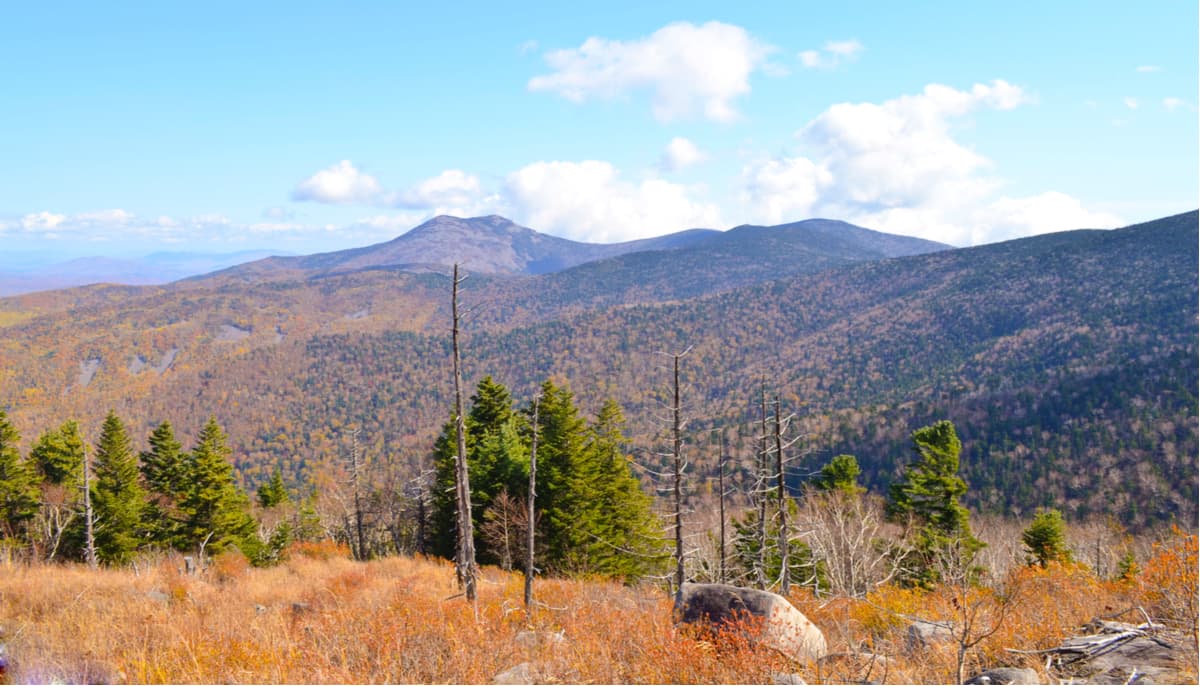Why are Sikhote-Alin Mountains So Prominent?
Unveiling Nature's Majesty: Exploring the Enigma of the Sikhote-Alin Mountains
Sikhote-Alin Mountains

The Sikhote-Alin Mountains stand as a testament to the grandeur of nature, rising majestically in the Primorsky and Khabarovsk Krais of Russia’s Far East. Spanning approximately 900 kilometers (560 miles) to the northeast of the Russian Pacific seaport of Vladivostok, these mountains command attention with their rugged peaks, lush forests, and rich biodiversity. In this comprehensive exploration, we delve into the reasons behind the prominence of the Sikhote-Alin Mountains, uncovering the geological, ecological, and cultural factors that make them a symbol of natural wonder.
Geological Origins
Tectonic Activity
The prominence of the Sikhote-Alin Mountains can be traced back to the geological forces that shaped their formation millions of years ago. The region’s geological history is characterized by tectonic activity, including the collision of continental plates and the uplift of landmasses. As a result of these processes, the earth’s crust in the Far East of Russia underwent significant deformation, giving rise to the towering peaks and rugged terrain of the Sikhote-Alin Mountains.
Volcanic Activity
Volcanic activity also played a crucial role in shaping the landscape of the Sikhote-Alin region. The presence of volcanic rocks, lava flows, and volcanic cones throughout the mountains attests to the area’s volcanic history. The eruption of ancient volcanoes contributed to the formation of the distinctive landforms and geological features that define the Sikhote-Alin Mountains today, adding to their prominence as a geological wonder.
Ecological Diversity
Biodiversity Hotspot
One of the primary reasons for the prominence of the Sikhote-Alin Mountains is their status as a biodiversity hotspot. The region’s diverse ecosystems, ranging from temperate forests to alpine meadows, support a wide variety of plant and animal species. The Sikhote-Alin Mountains are home to numerous rare and endangered species, including the Amur tiger, Far Eastern leopard, and Asiatic black bear, making them a globally significant center of biodiversity.
Habitat Diversity
The diverse habitats found within the Sikhote-Alin Mountains contribute to their ecological prominence. From dense forests teeming with wildlife to pristine rivers and lakes, the region offers a wide range of ecological niches for plants and animals to thrive. This habitat diversity fosters high levels of species richness and endemism, attracting scientists, researchers, and nature enthusiasts from around the world to study and explore the region’s unique ecosystems.
Cultural Significance
Indigenous Traditions
The Sikhote-Alin Mountains hold deep cultural significance for the indigenous peoples of the region, including the Udege, Nanai, and Oroch communities. These indigenous groups have lived in and around the mountains for centuries, maintaining close connections to the land and its resources. The mountains feature prominently in their myths, legends, and spiritual beliefs, serving as sacred sites and centers of cultural identity.
Hunting and Gathering
Traditionally, the Sikhote-Alin Mountains have provided sustenance for indigenous communities through hunting, fishing, and gathering. The rich biodiversity of the region supported a traditional way of life based on subsistence living, with people relying on the mountains’ resources for food, clothing, and shelter. Today, hunting and gathering continue to be integral aspects of indigenous cultures in the region, preserving age-old traditions and knowledge passed down through generations.
Scientific Interest
Research Opportunities
The prominence of the Sikhote-Alin Mountains extends beyond their natural beauty to encompass their scientific significance. The region offers valuable research opportunities for scientists and researchers studying diverse fields, including ecology, geology, botany, and wildlife biology. The mountains serve as living laboratories for understanding complex ecological processes, species interactions, and environmental dynamics in remote and pristine environments.
Conservation Priorities
Given their ecological importance and cultural significance, the Sikhote-Alin Mountains are the focus of conservation efforts aimed at preserving their natural heritage. Protected areas, such as the Sikhote-Alin Biosphere Reserve, play a crucial role in safeguarding the region’s biodiversity and habitats. Conservation organizations work closely with local communities, government agencies, and international partners to address threats such as habitat loss, poaching, and climate change, ensuring the long-term sustainability of the mountains’ ecosystems. Just as we know Why are Koryak Mountains So Prominent?
Recreational Opportunities
Adventure Tourism
The prominence of the Sikhote-Alin Mountains extends to the realm of adventure tourism, attracting outdoor enthusiasts and thrill-seekers from around the globe. The region offers a wide range of recreational opportunities, including hiking, trekking, mountaineering, wildlife watching, and river rafting. Adventurers can explore rugged trails, scale towering peaks, and immerse themselves in the pristine wilderness of the mountains, creating unforgettable experiences and memories.
Eco-Tourism Initiatives
In recent years, eco-tourism initiatives have emerged as a sustainable way to experience the prominence of the Sikhote-Alin Mountains while minimizing environmental impact. Eco-friendly lodges, guided tours, and community-based tourism projects offer travelers the chance to explore the region responsibly, supporting local communities and conservation efforts. By choosing eco-conscious travel options, visitors can contribute to the preservation of the mountains’ natural and cultural heritage while enjoying authentic and immersive experiences.
Conclusion
In conclusion, the prominence of the Sikhote-Alin Mountains is a result of a combination of geological, ecological, cultural, and recreational factors. Shaped by millennia of geological forces, the mountains stand as a testament to the earth’s natural processes and the resilience of the natural world. Their rich biodiversity, cultural significance, and scientific importance make them a symbol of natural wonder and a source of inspiration for generations to come. As we continue to appreciate and protect the prominence of the Sikhote-Alin, we ensure that their beauty and majesty endure for future generations to enjoy and cherish.
Know More about Sikhote-Alin Mountains.
What Are The Tourist Places Nearest to Sikhote-Alin Mountains?
When Were Sikhote-Alin Mountains Formed?
Where Are Sikhote-Alin Mountains Located?
Who Discovered Sikhote-Alin Mountains?
How to Reach Sikhote-Alin Mountains?




